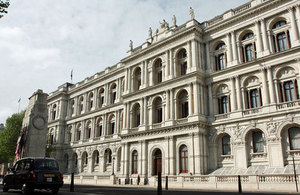Press release: Commuters’ perfect working day revealed
Commuters could speed up their journeys by up to 10 miles per hour by starting and finishing work just one hour later, according to new research.
The study by Highways England was carried out on a 9-mile-stretch of the M62 which links the M6 near Warrington to the M60 near Manchester. The route is used by 120,000 drivers every day and construction work is currently taking place to upgrade it to a smart motorway, increasing its capacity by a third.
Commuters had previously faced speeds of just 36 miles per hour between 5pm and 6pm when almost 9,000 drivers take to the short section of motorway on their way home from work.
The study has found that drivers who set off for work after 9am are likely to get there much more quickly than those travelling during the two hours after 7am.
Drivers using this stretch of the M62 who wait until 6pm before leaving the office are also likely to travel 10 miles per hour faster than those leaving at 5pm, or 20 miles per hour faster if they wait until 7pm – cutting journey times by around a third.
Overall, the research found that commuters travelling 20 miles each way and working the traditional 9am to 5pm day could be spending almost an hour extra on the road every week, compared to those working from 10am to 6pm.
Mike Bull, Highways England’s smart motorways programme manager for the North, said:
We all know that our roads are at their busiest during the morning and evening commute but it’s surprising that shifting our working days by just one hour could have such a significant impact on journey times.
Many people won’t have a choice about the hours they work but if some are able to start and finish work an hour later then it could benefit everyone – and save some drivers around an hour each week.
We’re also doing our bit to improve journey times for drivers at Highways England by converting some of our busiest stretches of motorway into smart motorways, adding extra lanes and using technology to prevent tailbacks caused by sudden braking.
The hard shoulders on each new smart motorway will be converted into permanent extra lanes and new emergency areas will be created for drivers to use if they break down. New CCTV cameras will also provide 100% coverage of the routes.
One of the most important signals on a smart motorway – the red X – is used to identify when a lane is closed and indicates that drivers should move into an open lane to continue their journeys.
Driving in a closed lane is dangerous, as there could be debris in the road or an accident or breakdown up ahead. Keeping the lane clear gives the emergency services the access they need to help.
More details about how to drive on a smart motorway are available at https://www.gov.uk/guidance/how-to-drive-on-a-smart-motorway.
General enquiries
Members of the public should contact the Highways England customer contact centre on 0300 123 5000.
Media enquiries
Journalists should contact the Highways England press office on 0844 693 1448 and use the menu to speak to the most appropriate press officer.
